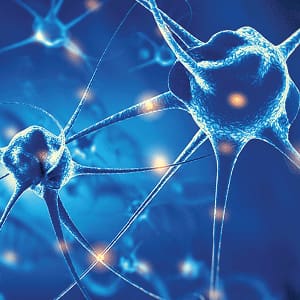
A shingles story
Learn what you can do to minimize your risk of this painful virus
When Halifax runner Alison Evers, an active 54-year-old mom, felt a sharp pain across her back, she thought she’d pulled a muscle.
“The pain was really intense, especially at night,” says Evers. “After suffering for at least a week with it, I went to the walk-in clinic, thinking I’ve really done something to my back,” she recalls. “The doctor looked at a small rash that had just popped up on my chest and said immediately, ‘You’ve got shingles!’”
Famous or not so famous, the effects of shingles and/or its related illnesses can affect anyone who’s had chicken pox. Canadian pop star Justin Beiber made headlines in 2022 when he cancelled tour dates and announced he was suffering from Ramsay Hunt syndrome. He developed partial facial paralysis and a rash due to the disorder, caused by the same virus that causes shingles and chicken pox.
Nearly one in three Canadians develops shingles in their lifetime, and the severity increases after age 50, according to Canada’s Immunization Guide. In fact, 95% of Canadian adults over 50 have already had chicken pox and are carrying the varicella-zoster virus, the cause of it all.
This virus can be reactivated or triggered as nerve pain and shingles at any time, but especially during times of stress or with a weakened immune system. Middle-aged and older Canadians who have had chicken pox in the past are especially at risk. The nerve pain that shingles causes can strike anytime, anywhere on the body, including the face, mouth, torso and around and even in the eyes.
“Shingles is caused by the reactivation of the chicken pox virus, [it’s] something many Canadians experience during their lifetime. That means they could develop shingles in the future, especially as they age,” says Dr. Yinka Akin-Deko, a family physician in Halifax. “After appearing as chicken pox, the virus is stored in some nerves of the body, where it can lie dormant forever, or in older people, it may reappear as shingles. When it’s reactivated, it brings on flu-like symptoms first—fever, headache—then intense pain, usually on one side of the body, followed a few days later by a rash outbreak on the skin.”
Dr. Marla Shapiro, a family physician and University of Toronto associate professor, explains shingles are a rash, often on the chest or neck, that is made up of painful red blisters. The rash usually breaks out along the distribution of a nerve root called a dermatome, on one side of the body.
There is no cure for shingles. Once you have it, it must run its course. Most sources estimate that the recovery time is three to five weeks; however, for some, it can take several months. Your doctor may prescribe pain relievers or suggest cool compresses or lotions. In some cases an antiviral maybe be prescribed to help lessen the symptoms and reduce nerve damage.
As you age, the chances of getting shingles increases. “At the age of 85, your chance of developing shingles climbs to 50%,” says Akin-Deko. “For those over 50, I always highly recommend getting vaccinated to avoid shingles in the first place.”
If you’ve never had chicken pox, be careful around someone who has been diagnosed with shingles, because it can be transmitted through direct contact with fluid from the blisters. The person remains contagious until the blistering rash crusts over.
Alison Evers recovered well. She’s back to good health and her regular routines. She’s booked her shingles vaccination and hopes others learn from her painful experience.

GIOVANNI CANCEMI / STOCK.ADOBE.COM
Beyond shingles
According to the Centers for Disease Control and Prevention, about 10% to 18% of people with shingles develop a chronic pain syndrome called postherpetic neuralgia. This ongoing condition is often described as burning or stabbing pain, sometimes with an altered sensation response to stimuli.
Dr. Yinka Akin-Deko, a family physician in Halifax, sees it in her patients and says: “Nerve pain can be very debilitating. In some cases, even after the patient has recovered from the initial onset of shingles, they still suffer from the nerve pain. We don’t know why.”—JE
Costco Connection: The shingles vaccines, as well as other immunizations, are available at Costco Pharmacies across Canada. Talk to your Costco pharmacist to learn more.
Pharmacies in Costco’s Quebec locations are independently owned and operated by pharmacists.

